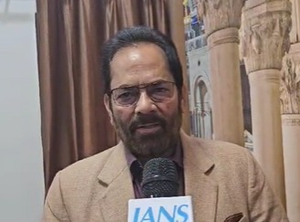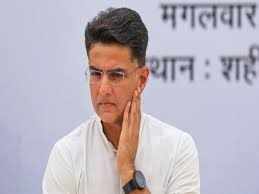Chittorgarh News Desk: In Rajasthan’s Chittorgarh district, many reservoirs, which are considered the backbone of drinking water and groundwater level, are lying dry. The situation is such that 85% of the dams do not have even a drop of water, while in the remaining, water is seen at the abyss. Only 2.76 percent water is left in 46 small and big dams of the district. Although the monsoon rains have begun, but the inflow of water has not yet started in these dams. From June 1 to June 27 this year, as compared to 750 mm of rain, 78.82 mm i.e. 10.51 percent of the average rain has occurred, yet the reservoirs are lying empty.
Above average rainfall predicted
The weather department has predicted more than average rainfall this time. Water will flow into the reservoirs of the district only from the monsoon rains. In view of the weather department’s prediction, the irrigation department has got the gates of major dams and ponds maintained so that the safety of the dams can be ensured in case of heavy rainfall. Out of the 46 dams in the district, only a few dams are filled with water. There are 46 dams under the Executive Engineer’s Office of Chittorgarh Water Resources Department, while the district’s largest dam, Rana Pratap Sagar Dam located in Rawatbhata, comes under the Kota Water Resources Department.
Farmers cultivating watermelons in dams
Out of the 46 dams in Chittorgarh, more than three-fourths of them have completely dried up and turned into plains. The biggest dam among them is Gambhiri, which is a major irrigation project along with drinking water. Apart from this, the condition of 40 dams including Wagan, Orai, Bhupalsagar is similar to Gambhiri, where not a single drop of water is seen on the surface level. In many of these dams, farmers are cultivating watermelon and melon. There are only half a dozen dams in which water is at zero level. This water is also reserved for drinking water of the people of the concerned area.
Know how much water is left in which dam?
According to the department, the capacity of Badgaon dam is 31.49 MCM against which currently only 2.64 MCM water is left. Similarly, Bassi has 3.45 MCM water left against its capacity of 23.22, Unchakiya dam has 2.04 MCM water left against its capacity of 5.27, Matrikundiya has 1.72 MCM water left against its capacity of 35.64, Somi has 43 MCM water left against its capacity of 2.4 and Ghosunda dam has 2 MCM water left against its capacity of 31.81 MCM.
Greasing of gates of dams and canals before monsoon
Executive Engineer of Water Resources Department Raj Kumar Sharma said that after the monsoon rains, due to the inflow of water in the reservoirs, the gates of all the small and big dams and canals of the district have been serviced and greased. Its main purpose is to open the gates of the dams so that water can be drained out in case of overflow of the dam. Meanwhile, the Agriculture Department has also increased the hectare area of sowing in the district in view of good rains this time.
Target for maximum sowing of Kharif
Joint Director of Agriculture Extension Dinesh Kumar Jaga said that the target of sowing Kharif crops has been set in about 3.25 lakh hectare area. Of these, the maximum sowing will be of maize. The second target has been set for sowing soybean. After the monsoon rains in the district, many farmers have started sowing in the fields.


